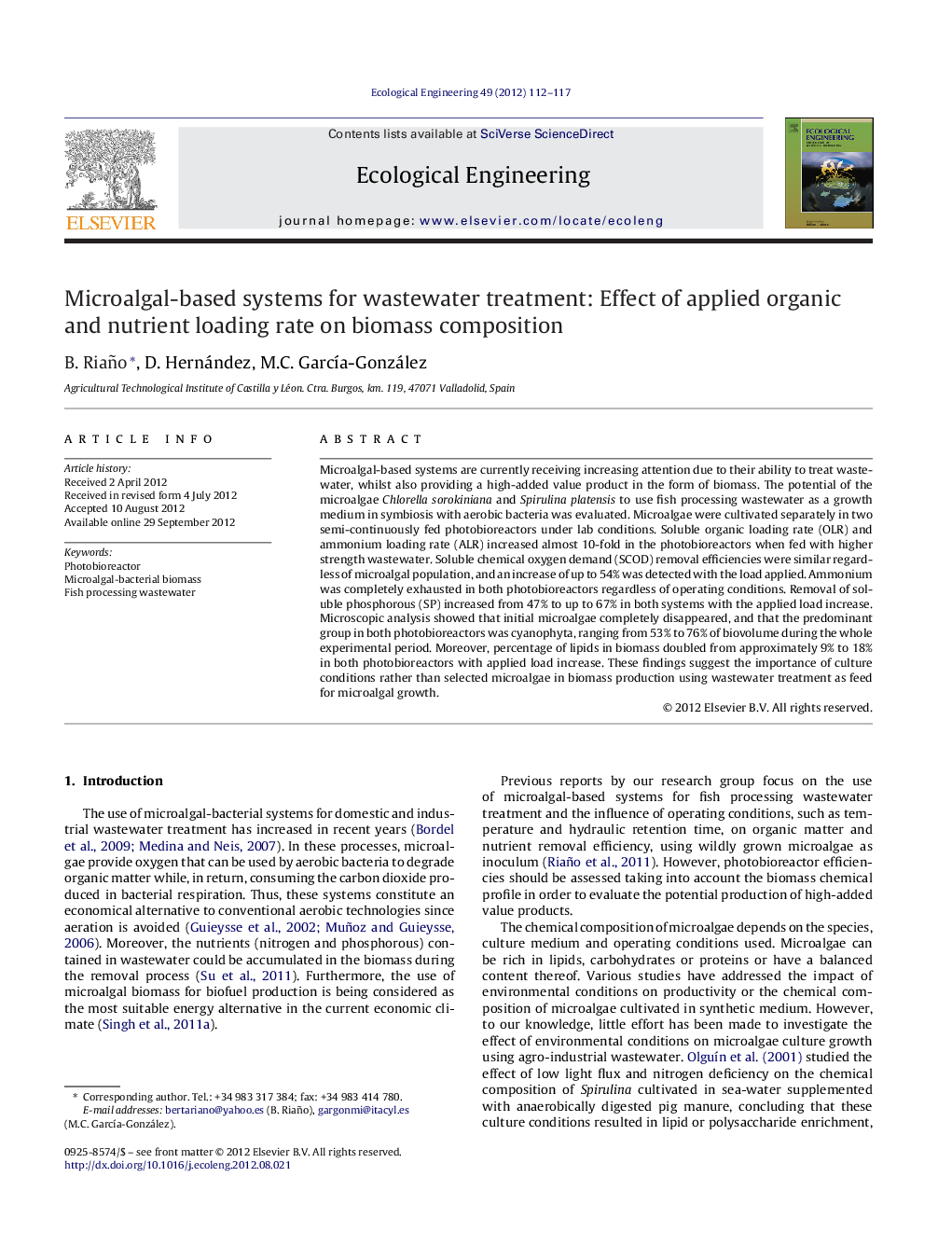| کد مقاله | کد نشریه | سال انتشار | مقاله انگلیسی | نسخه تمام متن |
|---|---|---|---|---|
| 4389892 | 1618049 | 2012 | 6 صفحه PDF | دانلود رایگان |

Microalgal-based systems are currently receiving increasing attention due to their ability to treat wastewater, whilst also providing a high-added value product in the form of biomass. The potential of the microalgae Chlorella sorokiniana and Spirulina platensis to use fish processing wastewater as a growth medium in symbiosis with aerobic bacteria was evaluated. Microalgae were cultivated separately in two semi-continuously fed photobioreactors under lab conditions. Soluble organic loading rate (OLR) and ammonium loading rate (ALR) increased almost 10-fold in the photobioreactors when fed with higher strength wastewater. Soluble chemical oxygen demand (SCOD) removal efficiencies were similar regardless of microalgal population, and an increase of up to 54% was detected with the load applied. Ammonium was completely exhausted in both photobioreactors regardless of operating conditions. Removal of soluble phosphorous (SP) increased from 47% to up to 67% in both systems with the applied load increase. Microscopic analysis showed that initial microalgae completely disappeared, and that the predominant group in both photobioreactors was cyanophyta, ranging from 53% to 76% of biovolume during the whole experimental period. Moreover, percentage of lipids in biomass doubled from approximately 9% to 18% in both photobioreactors with applied load increase. These findings suggest the importance of culture conditions rather than selected microalgae in biomass production using wastewater treatment as feed for microalgal growth.
► Fish processing wastewater was treated using microalgal-based systems.
► Photobioreactors were inoculated with Chlorella sp. and Spirulina sp.
► Organic matter and nutrient removal were similar regardless microalgal population.
► Biochemical profile of biomass exhibited a direct relation with applied load.
► The higher load applied to the systems, the higher lipid content in biomass.
Journal: Ecological Engineering - Volume 49, December 2012, Pages 112–117